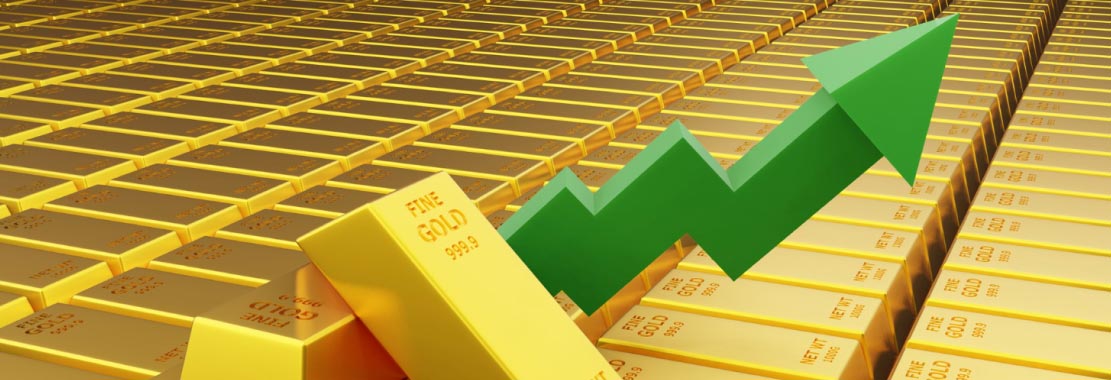Gold has always had a special spot in India. It’s more than just an investment. It is deeply connected to culture, weddings, and traditions. Families hand it down. It’s like a treasure box holding both money and memories. But lately, everyone’s asking a simple question: Why is the gold rate increasing?
Prices have been shooting up quickly. Honestly, it makes you stop and think. Is it just about inflation? Or is something much bigger happening? The truth is, several things are working at once. Gold reacts to everything—from global money changes to extra demand during festivals. That’s why it’s so interesting.
Understanding why gold prices climb isn't only for investors. Even families planning to buy jewellery feel the squeeze. So, let’s explain what is making this surge happen. And yes, keep asking yourself: Why is the gold rate increasing in India? The reasons might truly surprise you.
History of Gold Prices in India
Year
| Average Gold Price (per 10 gm)
|
2016
| ₹28,623
|
2017
| ₹29,667
|
2018
| ₹31,438
|
2019
| ₹35,220
|
2020
| ₹48,651
|
2021
| ₹48,720
|
2022
| ₹52,670
|
2023
| ₹65,330
|
2024
| ₹78,245
|
2025
| ~₹1,01,350
|
Factors that Influence Gold Prices
Lots of small details add up to show why the gold rate is increasing. Let’s look at each one.
Demand and Supply Dynamics
Gold is hard to find. That scarcity gives it value. When demand goes up—maybe due to world problems, wedding season, or investor worry—prices quickly push higher. A limited supply means even small increases in buying create big jumps.
Inflation Hedge
Gold has always been a safe cover. When inflation reduces the value of money, people turn to gold. Its worth usually stays steady. This makes it a secure place to put money when currency gets weak.
Interest Rate Influences
Gold and interest rates move like a seesaw. Lower rates make gold look good because other investments don’t pay much. Higher rates, however, pull investors away. This makes gold lose some of its shine.
Cultural and Seasonal Trends
In India, the need for gold peaks during weddings and festivals. Dhanteras, Diwali, Akshaya Tritiya—these times make families buy. This creates temporary peaks in demand. More demand, of course, means higher rates.
Government Actions and Reserves
Policies and reserves matter a lot. When governments or the RBI buy or sell gold, prices change. Big purchases worldwide can start movements that affect our local markets, too.
US Dollar Value
Gold is sold in dollars globally. If the dollar gets stronger, gold prices usually drop. If the dollar gets weaker, gold climbs. This link to the dollar explains why world events hit local jewellery stores so fast.
Why is Gold So Valuable?
Gold isn’t just a shiny piece of metal. Its value comes from history, rarity, and lasting power. For hundreds of years, people have seen it as money, status, and wealth all in one.
It keeps its value and protects against bad times. It is rare. Plus, it’s used in industry—in electronics or aerospace. That mix of tradition and practical use ensures it never loses its appeal.
All these things together explain why gold remains so valuable. It isn't just an ornament. It is history, economics, and culture woven into one single element.
Gold Prices Increase Significantly
The last few years clearly show that gold can jump wildly but still survive.
In October 2024, prices went from ₹60,282 to ₹78,577 per 10 gm—nearly 30% up since Diwali 2023.
By May 2023, rising US Federal interest rates pushed gold to ₹62,270 per 10 gm.
Back in March 2022, the war between Ukraine and Russia caused fears of inflation. This lifted prices to about ₹55,000 per 10 gm.
Every jump has a clear reason—war, inflation, or major policy changes worldwide.
Impact of Rising Gold Prices
Investment shifts: Central banks also modify their reserves and create upward pressure on prices.
Jewellery market behaviour in India: Many Indian shoppers will change their purchasing behaviour by purchasing lighter and less expensive designs when gold starts hitting higher-than-normal dollar prices.
Adjustments in technology sectors for production of electronics: Gold is a component of certain electronics, so as prices rise, production costs go up as well. This ultimately flows through to you the consumer as higher prices.
Protecting against inflation: Gold is a hedge against inflation which diminishes purchasing power. There is an upward motion on price for increased demand for a safe harbor.
Cognitive implications of stronger or weaker currencies: A weaker rupee makes gold imports more expensive, which will result in gold prices rising in India.
Implications for policy and economic decision-making: Central banks routinely change interest rates and money supply when gold prices rise. Central banks are trying to provide price stability while maintaining a low inflationary environment..
Additional Read: How to Invest in Digital Gold
How the Increase in Gold Prices Affects the Indian Economy?
India imports a lot of gold. Rising prices put a strain on our foreign currency reserves. It also increases the trade deficit, which often weakens the rupee.
Households feel the squeeze, too. People in rural areas, who often use gold to store wealth, buy less. Jewellery demand falls, hurting the industry.
At the same time, gold attracts investors looking for safety. This takes money away from stocks. This movement changes the financial markets. Simply put, rising gold prices affect everything, from homes to major policy decisions.
Conclusion
Gold is more than just jewellery. It’s a cultural, financial, and economic anchor. Why is the gold rate increasing? The answers are many, from inflation to strong demand. But its role as a safe asset remains the same always.














